- Home
- Neal Stephenson
Some Remarks: Essays and Other Writing Page 2
Some Remarks: Essays and Other Writing Read online
Page 2
While on the topic of sweat, it might be helpful here to distinguish among three different general levels of physical exertion, from most to least intense.
Aerobic exercise is something that everyone is supposed to perform for at least thirty minutes a day, five days a week. The heart is beating at 60 to 80 percent of its maximum rate (where maximum rate is a figure calculated mostly on the basis of age; a fifty-year-old man’s maximum is something like 170, so, doing the math, aerobic exercise should put his pulse rate in the band of about 100 to 136 beats per minute).
The heart beats faster in response to a demand for more oxygen. What uses oxygen is muscles. Bigger muscles use more. You can easily consume enough oxygen to bring your heart rate up into the 60-to-80-percent band if you work the larger muscles of your legs and lower abdomen, but it’s more difficult to do so if you are only using your arms. If you are not sweating, then you are probably not in aerobic exercise mode. The advantages of regular aerobic exercise have been well publicized and so I won’t rehearse them here. At some level everyone understands that this kind of exercise is good for you, and knows roughly why.
Aerobic exercise is usually contrasted against its evil complement, the sedentary state, and so everyone who can dutifully recite the benefits of aerobics can probably list the corresponding bad qualities of being sedentary: aerobics burns calories, sitting down doesn’t, and so on.
Dr. Levine and other researchers have made us aware of an intermediate state between sedentary and aerobic, which for purposes of this piece, I’m going to call “ambulatory.” We have already seen Dr. Levine refer to it as “low-intensity meandering-style activity.” Another term in the literature is NEAT, or “Non-Exercise Activity Thermogenesis.” Until recently we were told that mere strolling about, subaerobically, without breaking a sweat, wasn’t doing us that much good. Or to put it another way, it wasn’t delivering us from the negative effects of the sedentary state. But recent research has revealed some new dangers associated with being sedentary (the bad news, if you will) and shown that those dangers may be eliminated by going into the ambulatory, but subaerobic, level of physical activity—which is good news, and which is a new result.
The research shows that when you become sedentary, the big muscle groups all drop into a sort of coma (my word choice) that causes immediate, and bad, changes in blood chemistry. Those changes persist and continue to wreak damage on health until the muscle groups are brought back to life by going into movement. To quote from a 2010 paper by Alpa Patel et al. in the American Journal of Epidemiology:
. . . prolonged time spent sitting, independent of physical activity, has important metabolic consequences that may influence specific biomarkers (such as triglycerides, high density lipoprotein cholesterol, fasting plasma glucose, resting blood pressure, and leptin) of obesity and cardiovascular and other chronic diseases. Animal studies have also shown that sedentary time substantially suppresses enzymes centrally involved in lipid metabolism within skeletal muscle, and low levels of daily life activity are sufficient to improve enzyme activity.
The key here is that the movement needn’t be strenuous; hence the careful word choice in the NEAT acronym. “Thermogenesis” just means that the body is burning fuel. “Non-Exercise Activity” means that the big muscles are turned on, but at a low level. The muscles just need to be doing something. Even jiggling your feet while seated is worth something. Standing up is good, but better is ambulating at a modest pace. This is the condition that office treadmills are designed to produce in their users.
This distinction between what I’m calling ambulatory and aerobic styles of movement is the basis for the entire office walking trend. Since the research is new, it’s understandable that many who have been brought up to believe that subaerobic exercise is worthless are jumping to the assumption that what office walkers are asking for, when they propose installing treadmills in their cubicles, is the right to engage in full-on aerobic workouts all day long. In some cases this may be genuine confusion, in others a straw man used to defeat a proposal that makes managers skittish.
To this point it probably looks like I am setting this up as a slam-dunk case for ambulating while working, and getting ready to lambaste treadmill-resistant managers as insensitive and tragically shortsighted knuckle draggers. Well, they are. But in all fairness my knee did begin to hurt after I had been using my treadmill for a little while, and it hurt in a way that I had not experienced after other sorts of athletic exertions. The details aren’t important. I ended up seeing a physical therapist who took a close look at my gait and then prescribed a regimen of stretching exercises and some changes to how I walk. For one thing, I had to think a lot harder about shoes. Which is obvious enough in retrospect. Any sensible person about to set out on a five-mile hike will have the presence of mind to don reasonable footwear. If you are going to cover a comparable distance on a treadmill, you need to take the same precautions.
The knee has been getting better ever since I came to my senses concerning the shoes. With luck it will all blow over and I’ll be able to continue using my treadmill desk indefinitely without further difficulties.
But that’s not the point. The point is that I had to see a physical therapist to solve the problem, and doing so cost money. Not a lot of money, but some.
If I hadn’t used the treadmill, I wouldn’t have seen a physical therapist about my knee. Oh, I very likely would have seen one about my upper back and shoulders. And down the road I might have seen any number of medical specialists about heart disease, diabetes, and other disorders resultant from a sedentary lifestyle. But large organizations tend to prefer the devil they know to the devil they don’t. They’re accustomed to their workers suffering carpal tunnel syndrome, back pain, and the like. But an epidemic of knee or foot problems would show up on their books as a new cost, directly chargeable to the use of treadmills at work. A reduction in sitting-related medical claims probably wouldn’t be credited to the same program, though, since there’s no way to prove that a reduction in someone’s triglycerides or an easing of their shoulder pain is down to their use of a treadmill.
PRESUMABLY, PLAIN OLD WALKING AROUND IS EVEN BETTER FOR THE BODY than the somewhat unnatural gait that one adopts on a slow-moving treadmill. Treadmills are necessary for those who can’t work without continuous access to an immobile piece of equipment: almost always a computer.
Actually, since computers are now small enough to carry around in the pocket, the crucial, nonmoving piece of equipment to which office workers are now anchored is not the computer but its monitor. The advent of cheap high-resolution flat-panel monitors seems only to have made this worse, since they can display so much information at such high quality, offering at least the illusion of greater productivity and connectedness. Miniaturization and the move to wireless connectivity have increased the (at least theoretical) ability of workers to get up and move around in every respect save this one.
The question then poses itself whether wearable displays have yet advanced to the point where they are adequate substitutes for monitors. If so, and if some sort of walking-friendly input devices could be scrounged up or invented, then there would be no reason in principle why many workers couldn’t wander around freely for a substantial part of their workday. Cubicle farms could be replaced by large open spaces, devoid of furniture or other obstructions, where workers could move around in any way they liked. In good weather they could go outside and stroll around in the fresh air. Imagine taking a large call center and replacing it with a park dotted with wandering pedestrians, each equipped with a phone headset and an augmented-reality display giving them access to whatever data they needed to handle customer-service inquiries. Employee retention, which tends to be a serious headache in such operations, might be improved, and employee health ought to improve markedly. There need be no loss of supervisory control; whatever apparatus is now used for monitoring and recording calls would work just as well in this kind of setup as it does on a cubicle farm. P
erhaps better, since an ambulatory worker can just stroll over to talk to a supervisor when needed, or vice versa. It sounds a bit odd, and it would definitely constitute a revolution in office culture, but we already heading in that direction; it’s getting difficult to walk safely in places like airports and Manhattan streets because of all the busy people striding blindly ahead with their eyes fixed on the screens of their iPhones. Putting them in a place devoid of brick walls and speeding taxicabs would make the world healthier for them, and safer for all of us.
Slashdot Interview (2004)
[questions contributed by Slashdot readers]
THE LACK OF RESPECT . . . —BY MOSESJONES
Science Fiction is normally relegated to the specialist publications rather than having reviews in the mainstream press. Seen as “fringe” and a bit sad it’s seldom reviewed with anything more than condescension by the “quality” press.
Does it bother you that people like Jeffery Archer or Jackie Collins seem to get more respect for their writing than you ?
NEAL
OUCH! (removes mirrorshades, wipes tears, blows nose, composes self)
Let me just come at this one from sort of a big picture point of view.
(the sound of a million Slashdot readers hitting the “back” button . . . )
First of all, I don’t think that the condescending “quality” press look too kindly on Jackie Collins and Jeffrey Archer. So I disagree with the premise of the last sentence of this question and I’m not going to address it. Instead I’m going to answer what I think MosesJones is really getting at, which is why SF and other genre and popular writers don’t seem to get a lot of respect from the literary world.
To set it up, a brief anecdote: a while back, I went to a writers’ conference. I was making chitchat with another writer, a critically acclaimed literary novelist who taught at a university. She had never heard of me. After we’d exchanged a bit of of small talk, she asked me “And where do you teach?”
I was taken aback. “I don’t teach anywhere,” I said.
Her turn to be taken aback. “Then what do you do?”
“I’m . . . a writer,” I said. Which admittedly was a stupid thing to say, since she already knew that.
“Yes, but what do you do?”
I couldn’t think of how to answer the question—I’d already answered it!
“You can’t make a living out of being a writer, so how do you make money?” she tried.
“From . . . being a writer,” I stammered.
At this point she finally got it, and her whole affect changed. She wasn’t snobbish about it. But it was obvious that, in her mind, the sort of writer who actually made a living from it was an entirely different creature from the sort she generally associated with.
And once I got over the excruciating awkwardness of this conversation, I began to think she was right in thinking so. One way to classify artists is by to whom they are accountable.
The great artists of the Italian Renaissance were accountable to wealthy entities who became their patrons or gave them commissions. In many cases there was no other way to arrange it. There is only one Sistine Chapel. Not just anyone could walk in and start daubing paint on the ceiling. Someone had to be the gatekeeper—to hire an artist and give him a set of more or less restrictive limits within which he was allowed to be creative. So the artist was, in the end, accountable to the Church. The Church’s goal was to build a magnificent structure that would stand there forever and provide inspiration to the Christians who walked into it, and they had to make sure that Michelangelo would carry out his work accordingly.
Similar arrangements were made by writers. After Dante was banished from Florence he found a patron in the Prince of Verona, for example. And if you look at many old books of the Baroque period you find the opening pages filled with florid expressions of gratitude from the authors to their patrons. It’s the same as in a modern book when it says “this work was supported by a grant from the XYZ Foundation.”
Nowadays we have different ways of supporting artists. Some painters, for example, make a living selling their work to wealthy collectors. In other cases, musicians or artists will find appointments at universities or other cultural institutions. But in both such cases there is a kind of accountability at work.
A wealthy art collector who pays a lot of money for a painting does not like to see his money evaporate. He wants to feel some confidence that if he or an heir decides to sell the painting later, they’ll be able to get an amount of money that is at least in the same ballpark. But that price is going to be set by the market—it depends on the perceived value of the painting in the art world. And that in turn is a function of how the artist is esteemed by critics and by other collectors. So art criticism does two things at once: it’s culture, but it’s also economics.
There is also a kind of accountability in the case of, say, a composer who has a faculty job at a university. The trustees of the university have got a fiduciary responsibility not to throw away money. It’s not the same as hiring a laborer in factory, whose output can be easily reduced to dollars and cents. Rather, the trustees have to justify the composer’s salary by pointing to intangibles. And one of those intangibles is the degree of respect accorded that composer by critics, musicians, and other experts in the field: how often his works are performed by symphony orchestras, for example.
Accountability in the writing profession has been bifurcated for many centuries. I already mentioned that Dante and other writers were supported by patrons at least as far back as the Renaissance. But I doubt that Beowulf was written on commission. Probably there was a collection of legends and tales that had been passed along in an oral tradition—which is just a fancy way of saying that lots of people liked those stories and wanted to hear them told. And at some point perhaps there was an especially well-liked storyteller who pulled a few such tales together and fashioned them into what we now know as Beowulf. Maybe there was a king or other wealthy patron who then caused the tale to be written down by a scribe. But I doubt it was created at the behest of a king. It was created at the behest of lots and lots of intoxicated Frisians sitting around the fire wanting to hear a yarn. And there was no grand purpose behind its creation, as there was with the painting of the Sistine Chapel.
The novel is a very new form of art. It was unthinkable until the invention of printing and impractical until a significant fraction of the population became literate. But when the conditions were right, it suddenly became huge. The great serialized novelists of the 19th Century were like rock stars or movie stars. The printing press and the apparatus of publishing had given these creators a means to bypass traditional arbiters and gatekeepers of culture and connect directly to a mass audience. And the economics worked out such that they didn’t need to land a commission or find a patron in order to put bread on the table. The creators of those novels were therefore able to have a connection with a mass audience and a livelihood fundamentally different from other types of artists.
Nowadays, rock stars and movie stars are making all the money. But the publishing industry still works for some lucky novelists who find a way to establish a connection with a readership sufficiently large to put bread on their tables. It’s conventional to refer to these as “commercial” novelists, but I hate that term, so I’m going to call them Beowulf writers.
But this is not true for a great many other writers who are every bit as talented and worthy of finding readers. And so, in addition, we have got an alternate system that makes it possible for those writers to pursue their careers and make their voices heard. Just as Renaissance princes supported writers like Dante because they felt it was the right thing to do, there are many affluent persons in modern society who, by making donations to cultural institutions like universities, support all sorts of artists, including writers. Usually they are called “literary” as opposed to “commercial” but I hate that term too, so I’m going to call them Dante writers. And this is what I mean when I speak of a
bifurcated system.
Like all tricks for dividing people into two groups, this is simplistic, and needs to be taken with a grain of salt. But there is a cultural difference between these two types of writers, rooted in to whom they are accountable, and it explains what MosesJones is complaining about. Beowulf writers and Dante writers appear to have the same job, but in fact there is a quite radical difference between them—hence the odd conversation that I had with my fellow author at the writer’s conference. Because she’d never heard of me, she made the quite reasonable assumption that I was a Dante writer—one so new or obscure that she’d never seen me mentioned in a journal of literary criticism, and never bumped into me at a conference. Therefore, I couldn’t be making any money at it. Therefore, I was most likely teaching somewhere. All perfectly logical. In order to set her straight, I had to let her know that the reason she’d never heard of me was because I was famous.
All of this places someone like me in critical limbo. As everyone knows, there are literary critics, and journals that publish their work, and I imagine they have the same dual role as art critics. That is, they are engaging in intellectual discourse for its own sake. But they are also performing an economic function by making judgments. These judgments, taken collectively, eventually determine who’s deemed worthy of receiving fellowships, teaching appointments, etc.

 Zodiac: The Eco-Thriller
Zodiac: The Eco-Thriller The Mongoliad: Book One
The Mongoliad: Book One Snow Crash
Snow Crash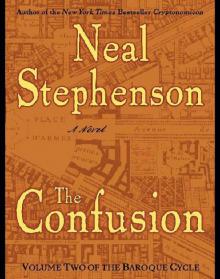 The Confusion: Volume Two of the Baroque Cycle
The Confusion: Volume Two of the Baroque Cycle The Rise and Fall of D.O.D.O.
The Rise and Fall of D.O.D.O. The Diamond Age: Or, a Young Lady's Illustrated Primer
The Diamond Age: Or, a Young Lady's Illustrated Primer The Big U
The Big U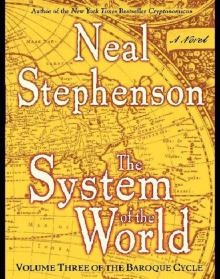 The System of the World: Volume Three of the Baroque Cycle
The System of the World: Volume Three of the Baroque Cycle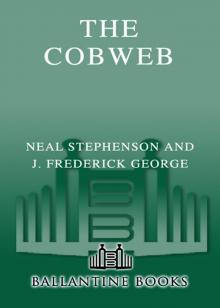 The Cobweb
The Cobweb Reamde
Reamde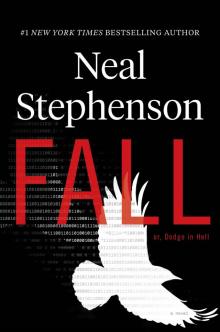 Fall; or, Dodge in Hell
Fall; or, Dodge in Hell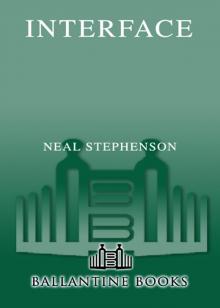 Interface
Interface Quicksilver
Quicksilver The Mongoliad: Book Three
The Mongoliad: Book Three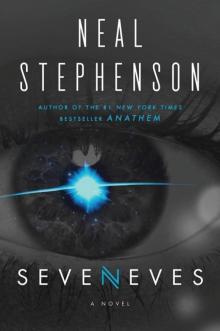 Seveneves
Seveneves Atmosphæra Incognita
Atmosphæra Incognita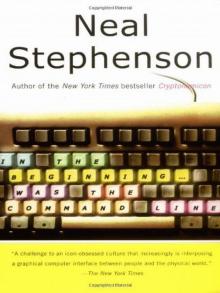 In the Beginning...Was the Command Line
In the Beginning...Was the Command Line Anathem
Anathem The Rise and Fall of D.O.D.O.: A Novel
The Rise and Fall of D.O.D.O.: A Novel The Mongoliad: Book Two
The Mongoliad: Book Two Diamond Age or a Young Lady's Illustrated Primer
Diamond Age or a Young Lady's Illustrated Primer THE System OF THE WORLD
THE System OF THE WORLD The Mongoliad: Book One tfs-1
The Mongoliad: Book One tfs-1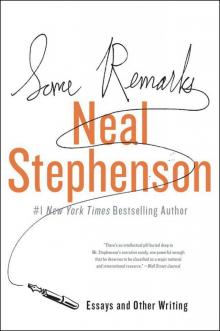 Some Remarks: Essays and Other Writing
Some Remarks: Essays and Other Writing Zodiac
Zodiac Spew
Spew The Baroque Cycle: Quicksilver, the Confusion, and the System of the World
The Baroque Cycle: Quicksilver, the Confusion, and the System of the World The Diamond Age
The Diamond Age Reamde: A Novel
Reamde: A Novel In the Kingdom of Mao Bell
In the Kingdom of Mao Bell Mother Earth Mother Board
Mother Earth Mother Board Twelve Tomorrows - Visionary stories of the near future inspired by today's technologies
Twelve Tomorrows - Visionary stories of the near future inspired by today's technologies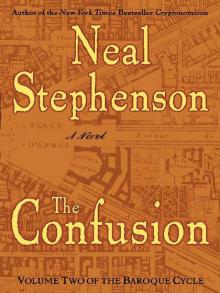 The Confusion
The Confusion The Great Simoleon Caper
The Great Simoleon Caper The Mongoliad: Book Three tfs-3
The Mongoliad: Book Three tfs-3